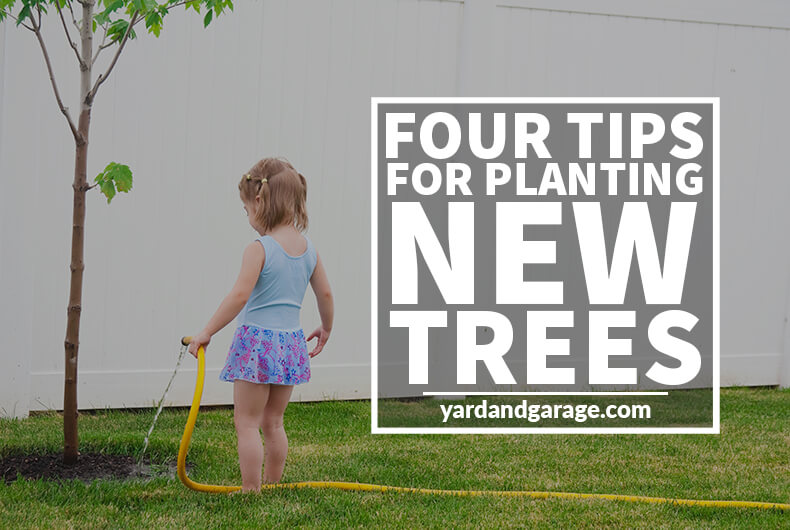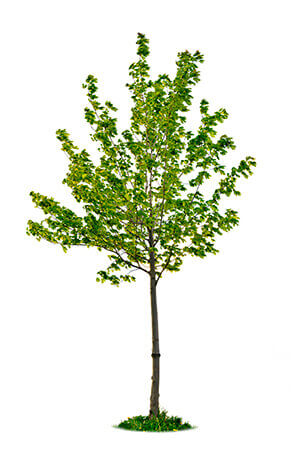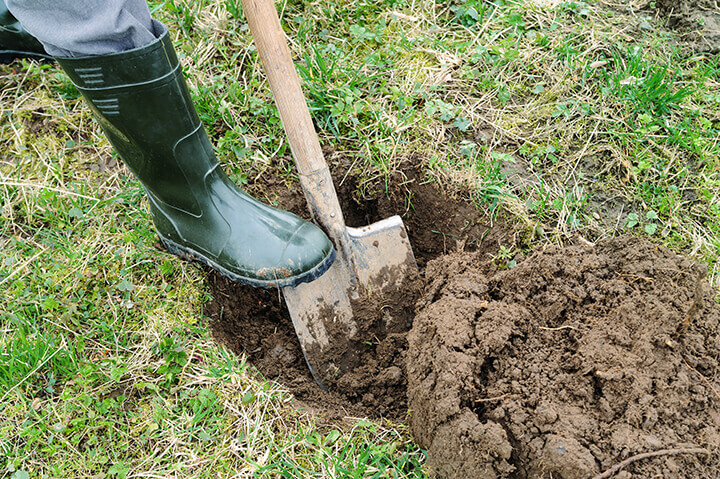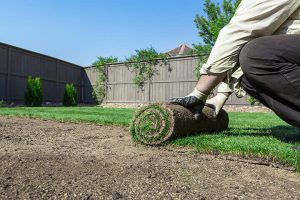
Whether you’re hoping for your own fruit or want to enjoy the fall colors of a sugar maple, there’s nothing quite like trees to add structure, character, and interest to your yard. Planting a tree isn’t difficult but like most things, it requires some planning ahead.
If you think a tree might be in your future, follow these four steps to give it the best chance at success.
Table of Contents
Plan Ahead
Are you looking for shade or texture? Do you have a specific amount of room available? No one wants to plant a tree only to find it needs to be cut down ten years later due to interfering with power lines.
Look around your neighborhood. What kinds of trees seem to grow well in your area? Do a soil test. Is the soil in your growing area known to be especially sandy or high in acidity?
Your local nursery will stock trees that grow well in your area, but it always pays to be informed before you go.
Consider the Source

Try to purchase trees earlier in the summer if you can; avoid specimens that have been sitting out in a lot all season.
Check with the nursery staff to see whether your trees were grown locally or trucked in from thousands of miles away. Checking the condition of the tree will also give you a good indication of how it has been cared for. Are the leaves green and healthy?
Check the soil to see that it has been kept properly moist. A tree that is already stressed will have a much more difficult time establishing a root system when its planted and will be more vulnerable to disease.
When you’re happy with the care the trees have received, decide whether you want to purchase a potted or ball and burlap tree. Potted trees have the advantage of being more easily relocated but typically hold less soil which may have caused undue stress to the tree.
Ball and burlap trees are able to hold more soil but can be unwieldy and difficult to maneuver.
Not All Holes are Equal
Knowing what kind of hole you need to dig will give your tree the best chance at thriving in its new environment. Dig a hole about two to three times as wide as the root ball and about equal to its deep. Feel free to break up the surrounding soil to allow the roots to penetrate easier but don’t amend it with compost or fertilizer.

Trees that are planted in rich, loamy soil may not be as eager to venture out into the native ground which may hinder deep roots and eventually stunt its growth.
If your tree is in a pot, lay it carefully on the ground and roll it back and forth a few times until the roots loosen enough to remove it. Grasping the dislodged trunk and roots, place the tree in the hole and backfill with soil until the surrounding area is at ground level with the top.
If the root ball is covered in burlap, make sure to cut and remove the wires before placing it in the hole. Assuming the burlap is natural (it may not be), cut a few slits in the material and you can plant it right along with your tree.
Cover the soil around the trunk with mulch to preserve moisture and offer some protection during cooler temperatures.
Watering and Staking
As soon as your tree is planted make sure you apply a steady stream of water to the roots for about four to five minutes. Over the next six to twelve months ensure the soil remains damp but not soaking. It’s is a fact that most new trees die from over-watering rather than under-watering.
Many gardeners are divided over whether to stake a new tree or not. Many argue that trees shouldn’t be staked and by doing so you run the risk of weakening the tree, but if you’re planting on a hill or in a place the receives a lot of wind it’s still a good idea to give your new tree some support at least for the first year. Wherever you land on the issue, make sure you keep an eye on your tree while it’s getting established so you can catch any problems early on.
Think of planting a tree as making a long-term investment. After all, it will probably still be there after you and your house are gone. Being wise in both your tree selection and hole preparation is the key to maximizing both the health and life of your tree.
Pinterest Image:




